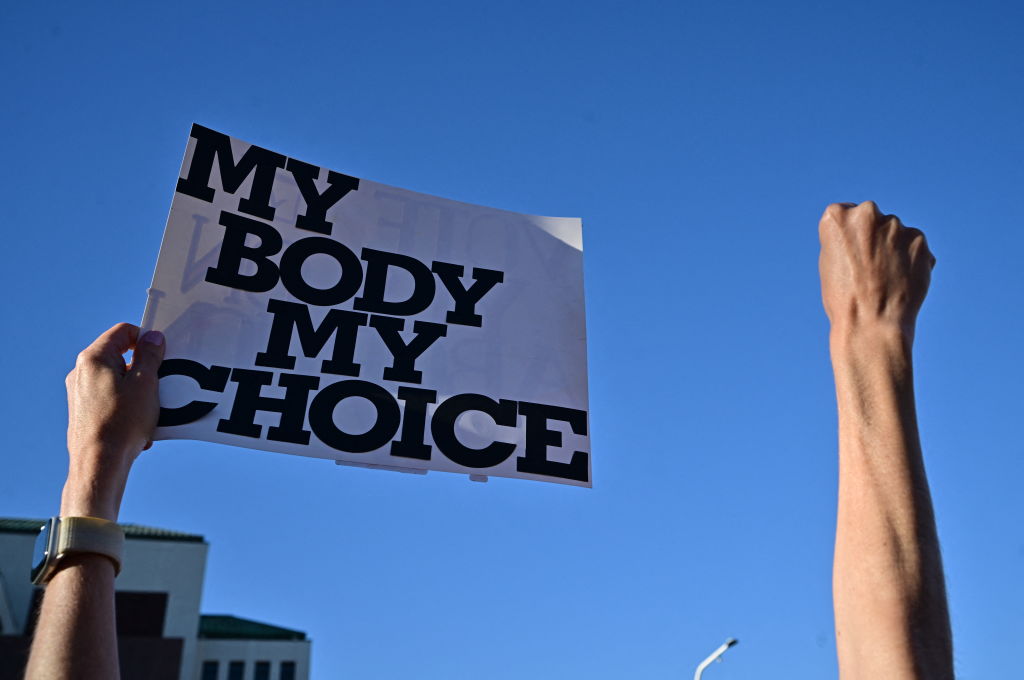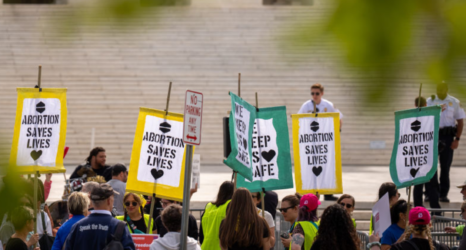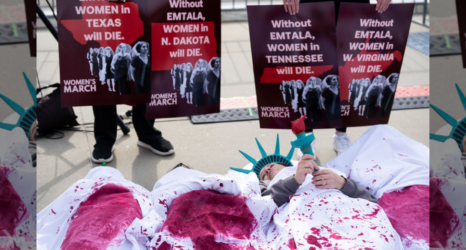‘Life of the mother’ exceptions are nothing more than a politically expedient lie designed to distract from the violence inherent in the maintenance of abortion bans.

Idaho will attempt to defend its extreme abortion ban at the Supreme Court this Wednesday. Like many other abortion bans in the United States, the Idaho law contains a so-called life exception, which purports to allow an abortion when “necessary to prevent the death” of the pregnant person. But do these exceptions actually preserve the lives of patients in practice? As Mayron Hollis, Amanda Zurawski, the family of Yeniifer Alvarez-Estrada Glick, and countless other women can attest, the answer is no. And the truth is, they’re not designed to.
No matter how they’re drafted and redrafted, abortion bans rest on the denial of the fundamental human right to reproductive autonomy. So-called life exceptions are designed to make abortion bans seem more politically palatable by allegedly allowing for abortions in “extreme” circumstances. But their political function is revealed by their unworkability: The exceptions are medically incoherent and designed in ways that are not possible to implement.
Thanks to a deadly combination of factors—including the wording of so-called life exceptions and a climate of fear in medical settings generated by abortion bans—life-threatening denials of care are inevitable.
For abortion rights opponents, this is a feature, not a bug. The goal is not to save lives but to drive the number of abortions (and abortion providers) down to zero, no matter the cost to the lives, health, dignity and autonomy of pregnant people. These life exceptions merely mask the quieter devastation all abortion bans cause: the stripping away of people’s bodily autonomy and their ability to make the best decision for themselves and their families in order to pursue their dreams and life projects.
The incoherence of life exceptions is well-established. Many lack definitions of what constitutes a life-threatening condition, recite lists of qualifying conditions that omit significant complications, or contain definitions that do not correspond to specific medical conditions.
Risks to life also emerge on a sliding scale, and the lack of clarity in law means patients are forced to wait—often bleeding and risking sepsis, organ damage or sudden death—until the threats to their life are deemed severe enough to permit abortion.
This is what happened to Anya Cook, a Florida woman who was sent home from the emergency room after being diagnosed with a life-threatening pregnancy complication. The next day, she lost roughly half the blood in her body during the process of a harrowing miscarriage.
How Abortion Bans Hinder Providers
Cases like these are not outliers. Abortion bans have led hospitals to fundamentally alter how they provide care, implementing new policies to minimize legal risks to clinicians and hospitals rather than medical risks to patients, according to a recent report from Physicians for Human Rights.
And yet, attempts to clarify these “life exceptions” have also proven ineffective. In Texas, the state medical board punted on offering further guidance to doctors to help them determine what would qualify as a life-threatening condition, saying, “We can only do so much” to clarify the terms of the law.
The goal is not to save lives but to drive the number of abortions (and abortion providers) down to zero, no matter the cost to the lives, health, dignity and autonomy of pregnant people
The chief victims of abortion bans are pregnant people. But the impact on clinicians and medical systems renders life exceptions even more ineffective. Unclear criminal laws, aggressive statements from law enforcement officials, and penalties up to life in prison make clinicians hesitant to provide life-saving care even in clear cases. The consequences for making an assessment that a state attorney general disagrees with about the necessity of care could be years of prosecution and threats to their medical license, even if they’re ultimately acquitted.
Clinicians in some states are also contending with privately enforced abortion prohibitions. These so-called bounty laws empower private individuals—sometimes limited to relatives of the pregnant woman, sometimes including strangers—to sue health providers who perform abortions. Because suits can be brought by bystanders who may have no understanding of the medical and legal contexts (but who are financially incentivized to push the boundaries of these laws), providers face the prospect of continuously defending themselves from frivolous or malicious lawsuits whenever they provide abortions or related care.
As a result, providers will predictably be less likely to provide any abortion care ever, even under life-threatening circumstances, and marginally less likely in each case to be willing to provide care.
All of this has driven clinicians out of practicing in entire states or regions—leaving patients in those regions who experience pregnancy complications without access to providers who have the skills to help them.
One doctor trained in specialized miscarriage and abortion care reported being forced out of her home state because she couldn’t bear to keep denying care and feared prosecution for the care she did provide.
This experience is echoed in other states, where clinicians report feeling “like there’s a target on [their] back[s].” In Idaho, a recent report showed that the state has lost 22 percent of its OB-GYNs since Roe v. Wade was overturned.
Ultimately, abortion bans put the health and human rights of pregnant people at risk, which can’t be eliminated by creating medically incoherent lists of exceptions. According to the World Health Organization (WHO), such an environment is created by all criminal abortion restrictions—not just extreme bans. For this reason, the WHO recommends the full decriminalization of abortion care and that it be made available at the request of the pregnant person.
The WHO guidelines recognize a fundamental reality: Pregnant people are not safe unless abortion is protected and fulfilled as a human right (as we argue in our amicus brief to the Supreme Court in the Idaho case). “Life of the mother” exceptions are nothing more than a politically expedient lie designed to distract from the violence inherent in the maintenance of abortion bans.
Abortion ban exceptions don’t protect lives—robust, effective access to abortion does.
Up next:
U.S. democracy is at a dangerous inflection point—from the demise of abortion rights, to a lack of pay equity and parental leave, to skyrocketing maternal mortality, and attacks on trans health. Left unchecked, these crises will lead to wider gaps in political participation and representation. For 50 years, Ms. has been forging feminist journalism—reporting, rebelling and truth-telling from the front-lines, championing the Equal Rights Amendment, and centering the stories of those most impacted. With all that’s at stake for equality, we are redoubling our commitment for the next 50 years. In turn, we need your help, Support Ms. today with a donation—any amount that is meaningful to you. For as little as $5 each month, you’ll receive the print magazine along with our e-newsletters, action alerts, and invitations to Ms. Studios events and podcasts. We are grateful for your loyalty and ferocity.





